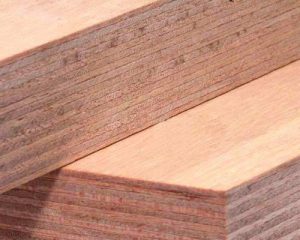If you are wondering how to choose different types of MDF, then you have come to the right place. In this article, we will go over the advantages and disadvantages of decorative mdf sheet, exterior grade MDF, colored melamine mdf, and moisture resistant MDF. We also discuss some common uses of MDF in interiors and exteriors. Using MDF for your interior or exterior doors will provide you with several advantages over solid wood doors.
Exterior grade mdf
When comparing exterior grade MDF, you should consider its moisture-resistance and density. These two characteristics make exterior-grade MDF a better choice for outdoor use than regular MDF. It also resists moisture and fungi better than its regular counterpart. If you are planning to install the panel outside your home, you should choose exterior grade MDF. It can also handle high-level humidity and rain.
If you have a water-damaged MDF, it can be easily repaired. Check to make sure that it has not become too soft or separated. While MDF that has been exposed to water for a long time will lose its quality, you can sand it down to smoothen its surface. However, if it has swelled and is distorted, it will have a weaker area.
There are some key differences between MDF and plywood. The former has no added formaldehyde, which is less harmful to the environment than the latter. On the other hand, the latter is less toxic and has a faster off-gassing rate. In addition, the dust particles produced by plywood are much smaller than those of MDF. This difference makes exterior-grade MDF an ideal choice for outdoor furniture.
Lightweight MDF has fewer wood fibers than regular MDF and a lower resin content. Lightweight MDF has a smoother finish, is easier to handle, and has a lower modulus of elasticity than standard MDF. If you’re not sure which one to buy, consider this guide. When buying exterior-grade MDF, you should choose a board that is moisture-resistant and has minimal traces of urea formaldehyde.
Both MDF and plywood contain real wood. However, the process of creating these products is not the same. One difference between these two types of wood is the type of glue used in the manufacturing process. For example, MDF starts with hardwood fibers and softwood fibers that are glued together with various resins. Plywood starts with thin layers of wood from peeler logs and is subjected to a process that involves high pressure and heat. Home improvement stores sell both products in sheet form. The higher the grade, the higher the price.
Moisture resistant MDF
Moisture resistant MDF is a special type of MDF made especially for interior applications, such as kitchen cabinets. Its moisture-repellent resin system increases dimensional stability and reduces swelling and cracking, making it ideal for high-humidity areas. It also takes most paints, veneers, and adhesives without issues. This type of panel is also suitable for use in bathrooms, where frequent wetting is likely.
MDF is a popular material used for furniture, skirting, window boards, and flooring. Its moisture-repellent quality makes it an ideal material for kitchens, bathrooms, laundry rooms, and boiler rooms. Its smooth surface makes it easy to paint and install. It is not suitable for exterior use, though. If you’re planning to use moisture resistant MDF for your home, make sure it is properly sprayed or painted.
Another type of moisture-resistant MDF is available as an alternative to plywood. It is a cheaper option that is highly resistant to moisture. These panels are usually made of medium density fiberboard (MDF) that has been treated with melamine or other coatings. They are more resistant to water than plywood, but not all moisture-resistant MDF will offer the same level of protection. You should compare moisture-resistant MDF panels before choosing them for your home.
The most important thing when choosing MDF is where you’ll be using it. If the room will be exposed to high humidity, rain, or snow, then moisture-resistant MDF is the better choice. While there are plenty of benefits to choosing this type of MDF, not all types are suitable for outdoor use. In fact, some types of moisture-resistant MDF will swell when exposed to extreme conditions. Make sure to choose the right type based on your needs and climate.
HDF
There are three main types of MDF panels, each with different characteristics. Some panels are made from 20 percent to 24 percent density. While the latter is ideal for smooth surfaces, softer boards are usually better for more rustic, natural-looking environments. The final choice should depend on your tastes and project needs. Listed below are the differences between each type. Let’s take a look at each type and discuss its benefits.
The cost of MDF is often a deciding factor. It is generally more affordable than plywood, but it looks and feels less like real wood. For these reasons, most people choose solid wood over MDF. However, if you need to install a cabinet in a high-moisture-resistance area, you should choose plywood instead. MDF is a better choice for doors and drawers than solid wood.
There are several differences between MDF and particle board. The latter is known as “softer” than MDF. It contains more natural wood fibers than particle board, so it won’t shrink and warp in humid conditions like particle board does. MDF is suitable for use in interior and exterior applications, such as drawer bottoms, flooring, boxes, and the back of furniture. Choosing a waterproof or normal MDF will depend on your needs.
MDF is easy to work with and can be used for simple interior design pieces. However, plywood adds durability and strength to your pieces. If you’re a do-it-yourselfer, MDF is an excellent option. If you’re not confident in using a saw, make sure to watch the video to learn how to work safely with wood panels. You’ll also learn how to use saws properly and avoid nicks and cuts.

